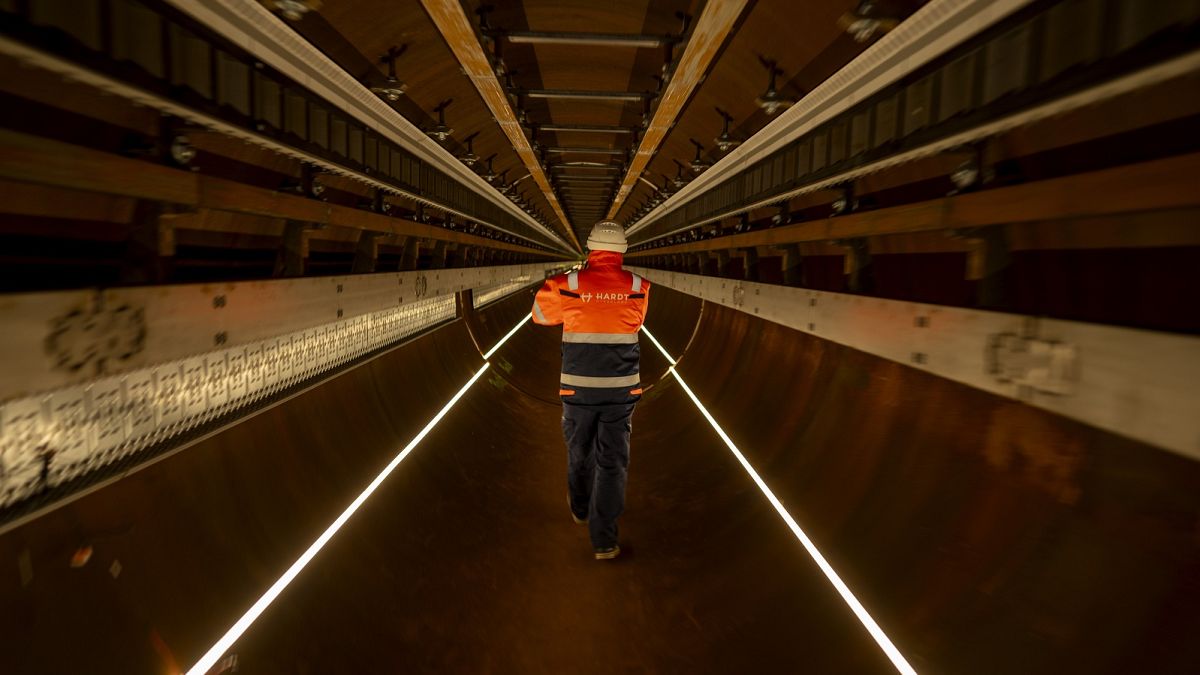Dutch Hyperloop Tests Show Promising Results for High-Speed Travel
Dutch Hyperloop tests show promising results, potentially revolutionizing high-speed travel between cities like Amsterdam and Paris.

Dutch Hyperloop tests have demonstrated promising results, indicating a potential breakthrough in high-speed travel. This innovation could significantly reduce travel times between major European cities, such as Amsterdam and Paris, to as little as 45 minutes. The Hyperloop concept, initially proposed by Elon Musk over a decade ago, involves transporting passengers in vacuum-sealed tubes at speeds of up to 700 km/h. The Dutch company behind these tests is focusing on both technical and commercial feasibility, aiming to make the technology accessible for public use. Sustainability is also a key aspect, as the system is designed to operate with low energy consumption. The implementation of Hyperloop systems is considered easier in crowded environments compared to traditional high-speed rail or highways. As the technology advances, it could transform the future of transportation by offering faster, more efficient, and environmentally friendly travel options. However, the search results do not provide specific details on the Dutch company involved or the exact nature of the tests conducted. For comprehensive insights, further information from official sources or local Dutch media would be necessary.
Introduction to Hyperloop Technology
The Hyperloop concept has been gaining attention for its potential to revolutionize transportation. By using vacuum-sealed tubes, it can achieve high speeds with minimal energy consumption, making it an attractive option for sustainable travel. The technology involves propelling capsules through these tubes, reducing air resistance and allowing for speeds that could significantly cut travel times between cities.
Advantages Over Traditional Transportation
One of the key advantages of the Hyperloop system is its ease of implementation in densely populated areas. Unlike high-speed rail or highway construction, which often requires extensive land acquisition and infrastructure development, Hyperloop tubes can be built above or below ground with less disruption. This makes it a viable option for urban environments where space is limited. Additionally, the low energy consumption aligns with global efforts to reduce carbon emissions and promote sustainable transportation solutions.
Future Prospects and Challenges
As the Dutch company moves forward with its Hyperloop project, the focus will be on transitioning from technical feasibility to commercial viability. This involves ensuring that the technology is not only safe and efficient but also economically viable for widespread adoption. The next steps will likely include obtaining necessary certifications and conducting full-scale trials to demonstrate the system's readiness for public use. Despite the promising results, there are still significant challenges to overcome, including regulatory approvals and public acceptance.
Sources:
-
{"url": "https://www.dailymotion.com/video/x9qky3s", "publisher": "Dailymotion", "country": "France", "language": "English", "publish_time": "2025-09-16"}
-
{"url": "https://www.euronews.com/2025/09/16/latest-news-bulletin-september-16th-2025-morning", "publisher": "Euronews", "country": "Belgium", "language": "English", "publish_time": "2025-09-16"}
-
{"url": "https://www.euronews.com/video/2025/09/16/latest-news-bulletin-september-16th-2025-midday", "publisher": "Euronews", "country": "Belgium", "language": "English", "publish_time": "2025-09-16"}